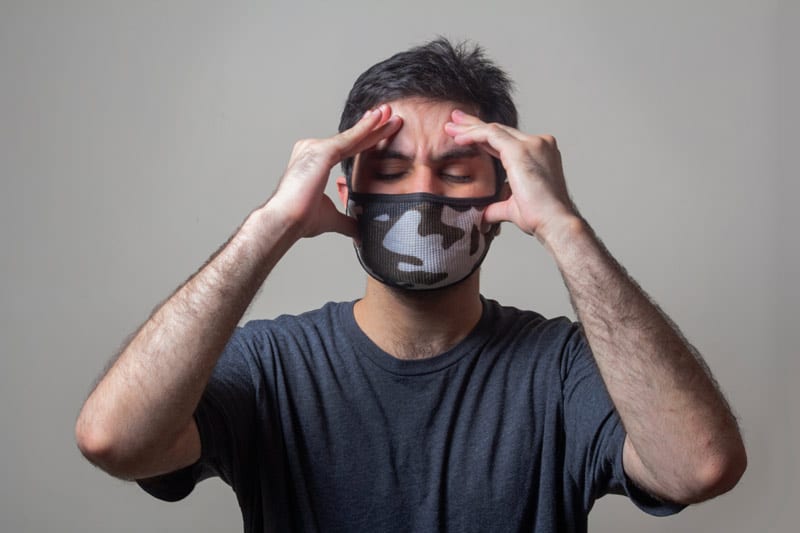Are you feeling that life is dreamlike or that everything is strange and unreal? You are not alone. The current lockdown has increasingly caused people to develop dissociative symptoms. If you’re one of them and are interested in getting back to normal, then keep reading.
The lockdown resulting from COVID-19 has been extremely stressful on most of us. It has disrupted our usual way of life. People from several corners of the planet have reported experiencing distressing symptoms such as anxiety and depression.
All the statistics indicate a substantial increase in feelings of anxiety, panic, depression, relationship issues, and overall stress levels. Lockdown has especially affected teenagers.
Before we proceed further, let me introduce myself. My name is Swamy, and I am someone who suffered from depersonalization-derealization disorder. After my full recovery, I created my website, ACoachCalledLife, to help others recover from depersonalization and derealization. In this article, I will share with you how to recover from depersonalization and derealization caused by the lockdown.
Dissociation from Stress
If the current pandemic and the subsequent lockdown have thrown your life into disarray, you are not alone. What could be even more frustrating is that all this additional stress can cause you to dissociate sometimes.
Dissociation can happen when you are under stress. Some people have reported feeling generally out of it. They feel disconnected from themselves. Many claim to experience one or more of the following dissociative symptoms:
- Feeling like life is a dream.
- Reality can feel unreal.
- Feeling like a stranger to yourself.
- Feeling as if you’re watching a movie about yourself.
- Feeling numb and emotionless, like you’re dead inside.
- Feeling panicky, anxious, as if something bad might happen anytime.
These are some of the symptoms of what’s known as depersonalization (DP) and derealization (DR) disorder, DP/DR for short. These symptoms can seem really scary and confusing. You may never have felt anything like this before.
Over the past few months, I’ve seen an increase in the number of people who contact me regarding their DP/DR symptoms. I’ve received many emails in the last few months from people who specifically claim that the pandemic lockdown is the reason why they are feeling this way.
As humans, we need a social connection to lead healthy lives. We also need to be protected against chronic stress. Take away our social connections and increase our general stress level, then we have a recipe for mental health issues to rise. So it’s no wonder that so many people have started to feel DP/DR symptoms.
So what can be done if you find yourself in this situation?
Understanding the stress-response
Before we go further, you need to understand how stress can affect your quality of life and potentially disrupt your everyday internal balance. It can cause spikes in hormone levels, specifically adrenaline and cortisol. Such a change in hormonal levels can bring about feelings of depersonalization, derealization, anxiety, and panic. I’ve written at length about the connection between stress, your nervous system, and depersonalization and derealization if you’re interested in knowing more.
In summary, what is happening to you is only a natural reaction to chronic stress. At times of increased stress, dissociation occurs as a way to shield us from the additional strain.
Think of dissociation as an airbag. When you get into a car accident, the airbag inflates, so you don’t suffer injuries. But one cannot drive around with the airbag inflated. An inflated airbag protects you, but it does compromise your ability to drive further.
Similarly, as stress levels increase, dissociative disorders like DP/DR are a way for our mind and nervous system to protect you against overwhelming stress. However, the dissociation itself causes you to be somewhat impaired.
Most people who go through these disorders feel disconnected from themselves. They are unable to feel emotions. This may not be an accident; it could be an intended evolutionary adaptation. Because stress can sometimes be overwhelming and cause emotional spikes, we disconnect from feeling the raw overpowering emotions we might experience if we were tuned into our feelings.
The problem is that DP/DR can themselves be stress-inducing. Such disorders and the symptoms that accompany them can be bizarre and very scary. Without the proper understanding of what is happening to you, you can get carried away by your fears. Your life can be thrown into disarray.
This can cause you to stress out more, which in turn keeps this disorder going. You get stuck in a loop of stress and DP/DR.
Given this is the case, how can one then recover from DP/DR?
Breaking the Loop
We may be struggling to get rid of depersonalization and derealization, not knowing the right thing to do. If we want to recover from DP/DR, we need to break this loop that keeps us in a continued state of stress and depersonalization. We do that by first understanding what this condition is.
We fear what we don’t understand. People often reach out to me in distress, saying they are worried that they are going insane or losing control. This only aggravates their stress levels.
We must aim to understand what is happening. What we’re experiencing is nothing more than a normal stress reaction. This can happen to anyone whose stress levels exceed their capacity to cope.
Once we clearly understand that, we must be willing to accept and allow such symptoms and experience them without trying to fight or block them. This won’t be easy. These symptoms are scary, weird, and unpleasant, so it takes many tries just to let them come and go without feeling the need to fight them.
The problem with fighting these symptoms is that resisting them keeps you in a state of stress. We don’t want to increase our stress load. We need to decrease it.
Accepting these bizarre and scary symptoms as the body’s normal reaction to stress actually helps the body and the nervous system calm itself down. When you throw a stone into a puddle of water, it becomes agitated, and you’ll see ripples. If you keep throwing stones, the water will be in a state of agitation. But if you stop and let time pass, the water settles down and becomes calm again. The same can be said of your mind and body. If we stop fighting these symptoms and accept them even if they are outlandish and scary, the mind and body will settle down and reach a state of calm.
To an extent, we cannot completely control the level of stress we experience when the causes are extrinsic, meaning coming from outside. Pandemics and lockdowns are examples of extrinsic stress. We may not have direct control over them. But we do have control over how we react to extrinsic stress.
We can just get confused and let our thoughts run wild and keep fighting our symptoms and let ourselves get caught up in the stress-DP/DR feedback loop, or we can cultivate a better understanding and practice acceptance to help ourselves calm down and break this vicious loop.
You Will Be Rewarded in the Long Term
Cultivating the inner strength to face these bizarre symptoms of depersonalization and derealization is better than trying to fight them endlessly. The choice is ours to make. It’s by no means an easy one. It’s easier to get mired in confusion and keep resisting the symptoms, but it takes effort and consistent practice to accept, allow, and let go when feeling unpleasant, strange, and scary DP/DR symptoms. However, if we keep doing that, we will find that these symptoms become less scary and daunting.
Over time you will find that you have become resilient. You will see that you are mentally stronger when you come out of this. That is what happened to me. I went through years of depersonalization and derealization, but when I started practicing the right guidelines (as outlined in my DP No More program), I started recovering from DP/DR. Now, I lead a healthy life free of dissociation. That doesn’t mean I don’t experience any stress. It means that when I do, I have a better handle on it. I know how to tackle stress and not let it get out of hand. The same can happen to you, too, if you follow the simple (but not easy) steps outlined in this blog post.
If you or someone you know experiences mental health issues, it is important to seek help from a qualified professional. Our Resource Specialist can help you find expert mental health resources to recover in your community. Contact us now for more information on this free service to our users.
About the Author: Swamy was once a depersonalization & derealization sufferer. After his recovery, he trained to become a certified counselor to help people recover from DP/DR, anxiety, and panic disorder. On his website ACoachCalledLife, he shares all the resources one needs to overcome depersonalization, derealization, anxiety, and panic. He is also the creator of DP No More, a science-based online video course to help you fully recover from depersonalization and derealization.
Photo by Usman Yousaf on Unsplash
The opinions and views expressed in any guest blog post do not necessarily reflect those of www.rtor.org or its sponsor, Laurel House, Inc. The author and www.rtor.org have no affiliations with any products or services mentioned in the article or linked to therein. Guest Authors may have affiliations to products mentioned or linked to in their author bios only.
Recommended for You
- How to Stop Nail Biting: What Finally Worked for Me After Years of Failed Attempts - December 26, 2025
- Dealing With Toxic Family Members: A Survival Guide for Family Gatherings - December 22, 2025
- When to Seek Help from a Child Psychiatrist: 6 Signs Your Child Needs Support - December 19, 2025





